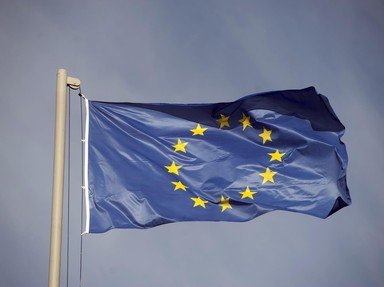Quiz Answer Key and Fun Facts
1. When did French minister Aristide Briand suggest the idea of a European Federation within the League of Nations?
2. The Benelux was the first treaty between European countries concerning free traffic of goods and persons. When did Belgium, The Netherlands and Luxembourg establish the Benelux?
3. In 1949, the Council of Europe was established. Ten countries participated - which of the countries below was NOT a member?
4. In order to restore and modernise the European economy after WWII, the United States lent large sums of money to 16 European countries. Which American Secreatry of State (foreign minister) devised this project?
5. The receiving countries (of the aid mentioned above) had to co-operate in the Organisation for European Economic Co-operation. When the project ended, in 1960, this organisation expanded its borders to outside of Europe and was renamed to:
6. Upon the economic developments in Western Europe in the late forties, the Soviet Union had to come up with a response. So it did, by organizing all countries under its influence in an organisation called:
7. What does the German term 'Wirtschaftswunder' refer to?
8. The primary objective of this German Chancellor was the integretation of Western Europe, including West Germany (from 1951). From 1917-33 he had been mayor of Cologne.
9. Although the first West German chancellor found support for his ideal with the French minister of foreign affairs Schumann, France kept resisting as it was afraid of German rearmament. With what French politician did the above chancellor finally come to an agreement (a friendship accord between Germany and France), in his 13th year in office?
10. The events in Eastern Europe in the late forties urged the countries in the Western Hemisphere to found a certain organization, namely the:
11. In 1950, the French Minister Rene Pleven developed the design for the EDC, a specific kind of European co-operation. What was the department of this minister?
12. In 1948, a predecessor of the NATO was founded by Belgium, the Netherlands, Luxembourg, France and the UK. In 1954, Italy and W.Germany joined. What is the name of this organisation?
13. What did the Hallstein Doctrine dictate?
14. In what year was the Warsaw Pact established?
15. In 1951, six countries (France, Western Germany, Italy, and the three Benelux countries) signed an economic treaty which is now considered to be the basis of the present European Union. What was this treaty about?
16. The Council of Ministers, the European Parliament and the European Court are in which two cities?
17. In 1957, France, Italy, West Germany and the Benelux countries signed a treaty which, among other things, involved the foundation of the European Economic Community (EEC) and the European Community for Nuclear Energy (Euratom). This was the Treaty of ______ ? Fill in the blank.
18. With the establishment of the EEC and Euratom, besides the European board of Ministers, Parliament and Court, one other body was invented. Was this the European Central Bank or the European Commission?
19. Seven other European countries, the UK, Sweden, Switzerland, Austria, Denmark, Norway, and Portugal did not feel comfortable joining a strong supranational organisation like the EEC, so they founded another - formally less cohesive - organisation. What is the name of this organisation?
20. Which European politician loved to speak of a 'Europe from the Atlantic to the Urals', referring to the desire for improving relationships with Eastern Europe and the Soviet Union?
Source: Author
Gnomjas
This quiz was reviewed by FunTrivia editor
gtho4 before going online.
Any errors found in FunTrivia content are routinely corrected through our feedback system.
